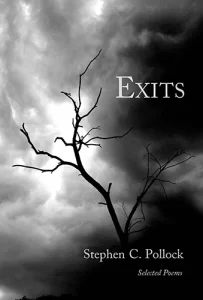Yellow Medicine Review – Fall 2011
Fall 2011
Biannual
Erik Thalman
Yellow Medicine Review is an illuminating, varied and enjoyable read. True to its subtitle—“A journal of Indigenous Literature, Art and Thought”—the magazine offers a rich bouquet of different literary experiences, distinct expressions of what it means to be Native American.
Yellow Medicine Review is an illuminating, varied and enjoyable read. True to its subtitle—“A journal of Indigenous Literature, Art and Thought”—the magazine offers a rich bouquet of different literary experiences, distinct expressions of what it means to be Native American.
Susan Powers opens the magazine with a clever piece recounting a Facebook argument that came after she posted an article outlining the indignant Native American response to the military’s name for Bin Laden: Geronimo. Powers’s article is a refreshingly easy read, not heavy or overburdened with lengthy prose. That’s not to say it doesn’t pack a punch. She foreshadows the emotional power of many of the pieces in the magazine when she says, “Yes, after centuries of being told who we are, you’d think we’d have a little air-time coming to us, the chance to break past the Intellectual Reservation that locks us up more surely than any treaty ever did.”
There is literary richness in this magazine to be sure. Gerry Robinson offers a brilliant little piece of nonfiction, an account of a conversation she witnessed in her father’s pick-up as a girl. Her father stopped, on what looked to her like a barren stretch of wilderness, to offer a friend a ride, and the two began to chat with their hands in the old Cheyenne way, using English words only to clarify here and there. She describes how she stared openly at this man wandering the wilderness alone, how Indian he looked. “A knowing seemed to find me; he belonged to this land, and it to him.” Once they drop him off, still in the middle of nowhere, she says “I turned back around in my seat and began repeating the word to myself with my own hands; shortcut, shortcut.”
Gord Bruyere’s “Draw Sounds and Speak Them Back” is a fine example of the magazine’s poetry. Addressed to the Creator, the prayer-like poem is filled with vibrant imagery and rich, rhythmic sound-play:
made you the universe,
conjured you star dust
people-clustered the dark,
imploding exploding
sweat lodge birth canal
of thought earth life and words.
I was pleasantly surprised to find voices from other ethnicities in the magazine such as the poem “Free Flight” by Dina Omar, subtitled: “What it’s like being a Palestinian Woman and UC Berkeley while Gaza is Burning.” It’s a difficult poem to read because of the gruesome imagery, but it is morbidly beautiful and powerfully important. There is a particularly harrowing description of a boy wounded by chemical weapons:
we want you to notice because white phosphorous—starts small—
a scratch
a little burn
and water is like a small flame
within hours it eats away at flesh
I recommend Yellow Medicine Review for its varied reading experience and its textured and rich glimpse into the experience of being Native American, or ethnically different in a wider sense.
[www.yellowmedicinereview.com]




